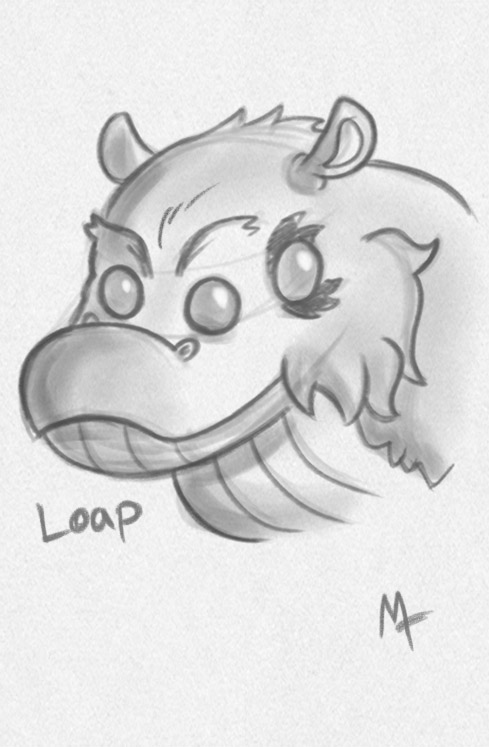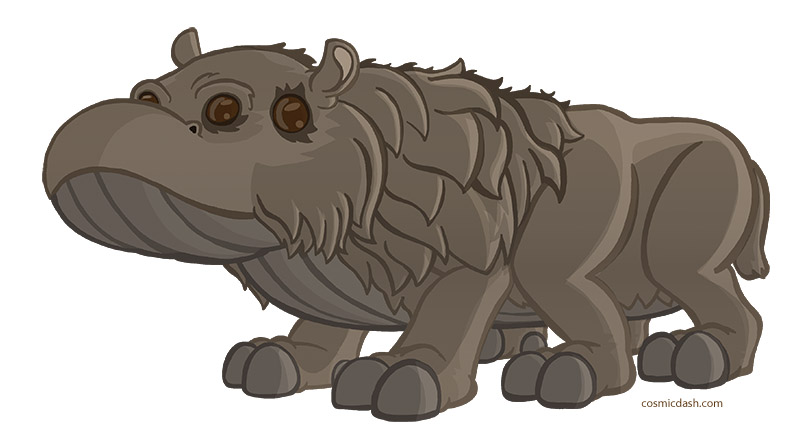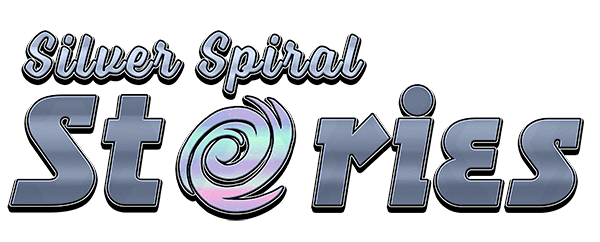The following is an entry in Meilo Thench’s ongoing fiction series Silver Spiral Archives – an in-universe series of writings by researcher Meilo Thench. The original version of this article was published on Wattpad but has since been republished here and features corrections, enhancements, and internal links when relevant.
Comments are open for inquiries, questions, and corrections.


The Loap is a widespread species in the current era due to their relative passivity and value as pack animals and as a food source. Historical records are relatively vague, but Loaps are said to have originated about 2300 PGA on a world colonized by the Grey in the distant past. Records vary, but the leading candidate is Ooval, around 23.7 LY from Oonoo, the Grey homeworld.
Seeing the value of the beasts, these ancient Grey prized them for their mild behavior and the array of resources that could be provided, including meat. Additionally, they also proved instrumental for biotech applications as test subjects, and the first instance of Grey cloning technology finding success was the birth of Marbie, a Loap.
Modern Grey cannot digest meat, but the humble Loap is still widely raised as a source of food, leather, fur, fuel, and fertilizer across the galaxy. Loaps are hardy pack animals but have limitations and can not survive in scorching climates. Loap fur is so thick that the animals can cook under their dense, coarse hair layers during heat waves. Many Blassnaught colonies struggle to maintain Loap populations, given the extreme climates of some planets.
The Loap is a rather heavy pack animal ranging between 2 to 4 meters in length and about 1.5 to 2 meters tall. Their elongated bodies are held up from the ground by six thick, stubby limbs. Their paws are broad and thick, with two stubby hooves over their toes. The Loap has two sets of eyes: a forward-facing set with a wide field of view and some somewhat primitive eyes along the side of their head to scan for sudden movements. The Loap is naturally born with a tail, but most captive Loaps tend to get their tail bobbed at birth to prevent them from getting stuck, as Loaps tend to be relatively clumsy.

Loap bodies are thick due to layers of fat and fur, but their undersides are relatively hairless and prized by leathercrafters. The undersides of Loaps are covered with teats that allow Lopes of either sex to nurse young. Adult Loaps typically feed on grasses and lichen, while the young drink milk infused with vegetative matter.
Interestingly, the milk of the Loap changes as the adult’s litter ages. The Loap will process the plant matter far less, and the milk it produces is thick with chunks of the plant scraps, essentially weaning the offspring off the milk and onto plants. Loap milk is very popular among many species, and generally, harvesting milk from a Loap does not endanger any Loaplings as Loaps spend much of their time eating and producing milk. The milk is generally green due to vegetable matter, and the milk’s smoothness depends on the litter’s age and the customers’ demands. Though Grey do not consume meat, they can drink Loap milk, a staple of much of the modern Grey diet, even today.
Loap meat is widely consumed, the Loap being the second most-consumed animal in the galaxy behind the Ocian Fatfish. Loap flesh is a rich red meat that tends to be complimented well by sweeter spices. Consuming raw Loap is not advised as it is not uncommon for Loaps to pick up internal parasites from their diets. If one must eat raw Loap, which is quite the delicacy on Blassna, it is advised to do so under the watchful eye of a talented chef. The choicest cut of the Loap lies on their hairless underside as the mammary glands consist of plenty of fatty tissues. The particularly tough meat in their feet and legs is generally minced for filler.

Loaps are not generally raised as pets or mounts. While Loaps have the temperament for these roles, they are usually too large or too slow, respectively. However, they make good pack animals for transporting cargo and goods in slower caravans. Loaps can be found on many worlds because of these properties, and early colonies brought Loaps with them. Even in today’s more technologically advanced colonial programs, it is not uncommon for breeding pairs and genetic samples of Loaps to be included in colonial supplies.
Male Loaps can become quite aggressive in the presence of females in heat. This is a side result of this nature: many male Loaps are used in rodeos during mating seasons, particularly in more rural worlds. The large, flat teeth of Loaps are crucial in some existing tribal rituals and are not unknown as trinkets and jewelry.



